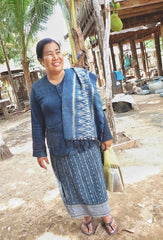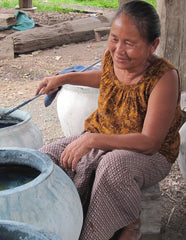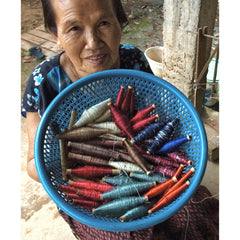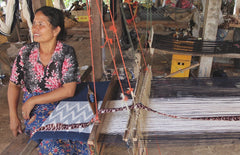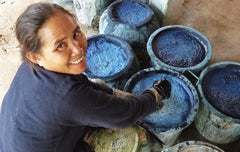Indigo Diamond Pillow Cover
Real hand-dyed indigo textiles are hard to find and these are a true work of art you will be proud to display in your home. You can really tell the craftsmanship of the ancient technique that went into making these. The dying tradition is a meticulous and time consuming process. N atural indigo contains no chemicals or toxic metals and fabrics dyed with indigo are believed to be good for the skin.
- Material: Handwoven, indigo dyed cotton + cotton lining
- Measurements: 16" x 16"
- Details: Zippered closure
- Handmade with love in Laos
- As with all handcrafted goods, there are slight variations making each piece a work of art and truly one of a kind.
- Note: This is only the cover. Pillow insert not included.
Artisan Profile
Laos is a country of diverse ethnic groups, each with unique and highly adept craft and artisan skills, but the pressures of modern life and the availability of cheap factory made imports have resulted in Lao people giving up their crafts and their rural livelihoods. As a result, many of the crafts of Laos are vanishing art forms. Our design and production teams work closely with artisan groups in Laos to create items that fit modern, natural lifestyles while still retaining the spirit of traditional craftsmanship. Guided by the principles of fair trade, we work to create employment opportunities for villagers, especially women, and to reduce poverty and each product is made and finished in the villages.
The cotton used to make these pillows is planted by hand and watered by the monsoon rains. It takes eight months for the plant to produce the cotton flower, then it is picked by hand, ginned by hand (a difficult and tedious activity), and then spun into yarn by hand. Traditional wood and bamboo looms are used by weavers to transform the cotton fiber into cotton cloth.
Indigo dying is a skill that is passed on through generations and is an ancient art steeped in myths. Menstruating women are kept away from the indigo jars for fear of upsetting the “indigo spirit” and rendering the dye useless. Indigo dye is made from the leaves and shoots of the “kharm” plant, which grows in many areas in Laos. Getting the raw materials for indigo may be easy, but making it is an art. It involves fermentation of the “kharm” and keeping the mixture in air-tight jars at the required temperature.
